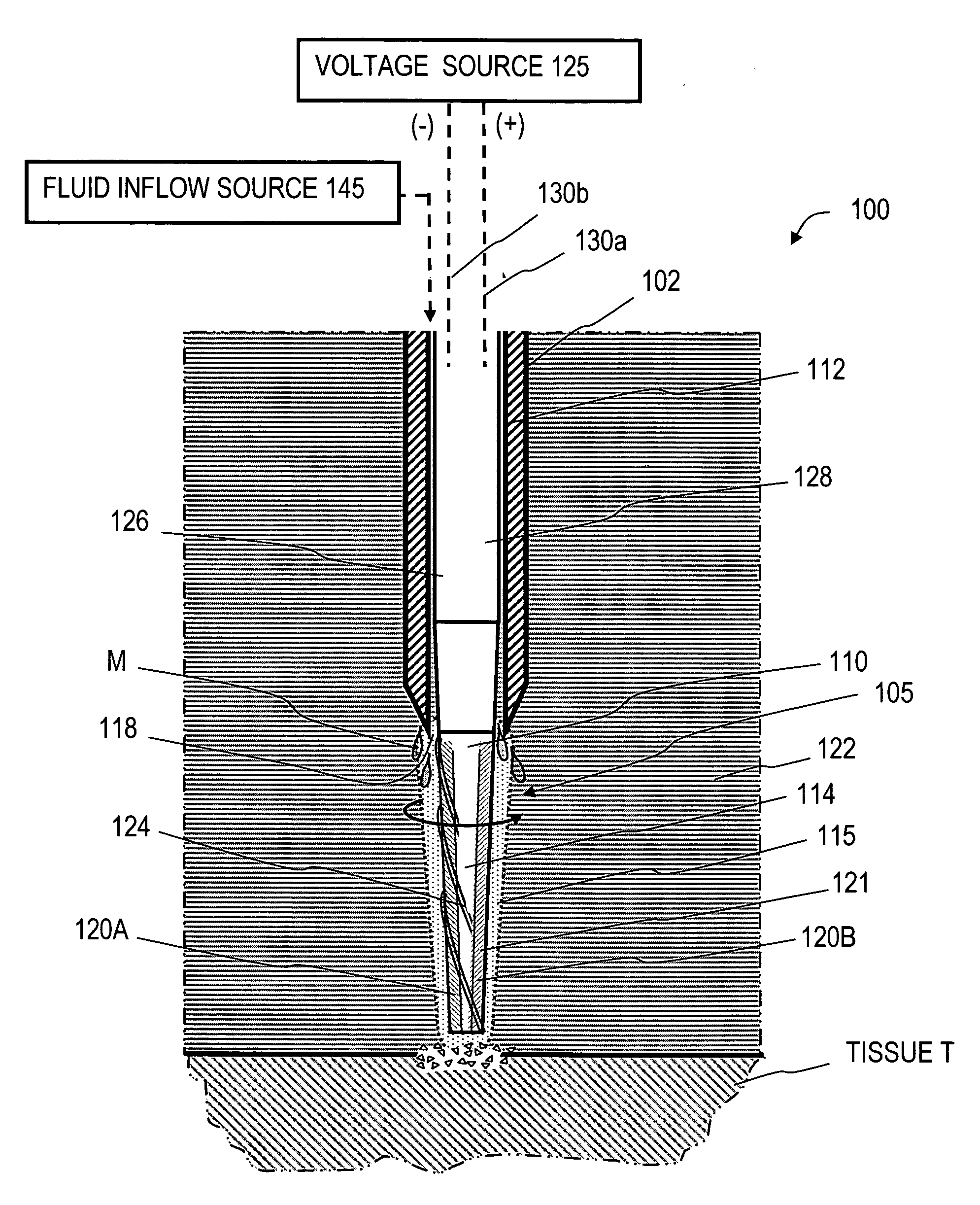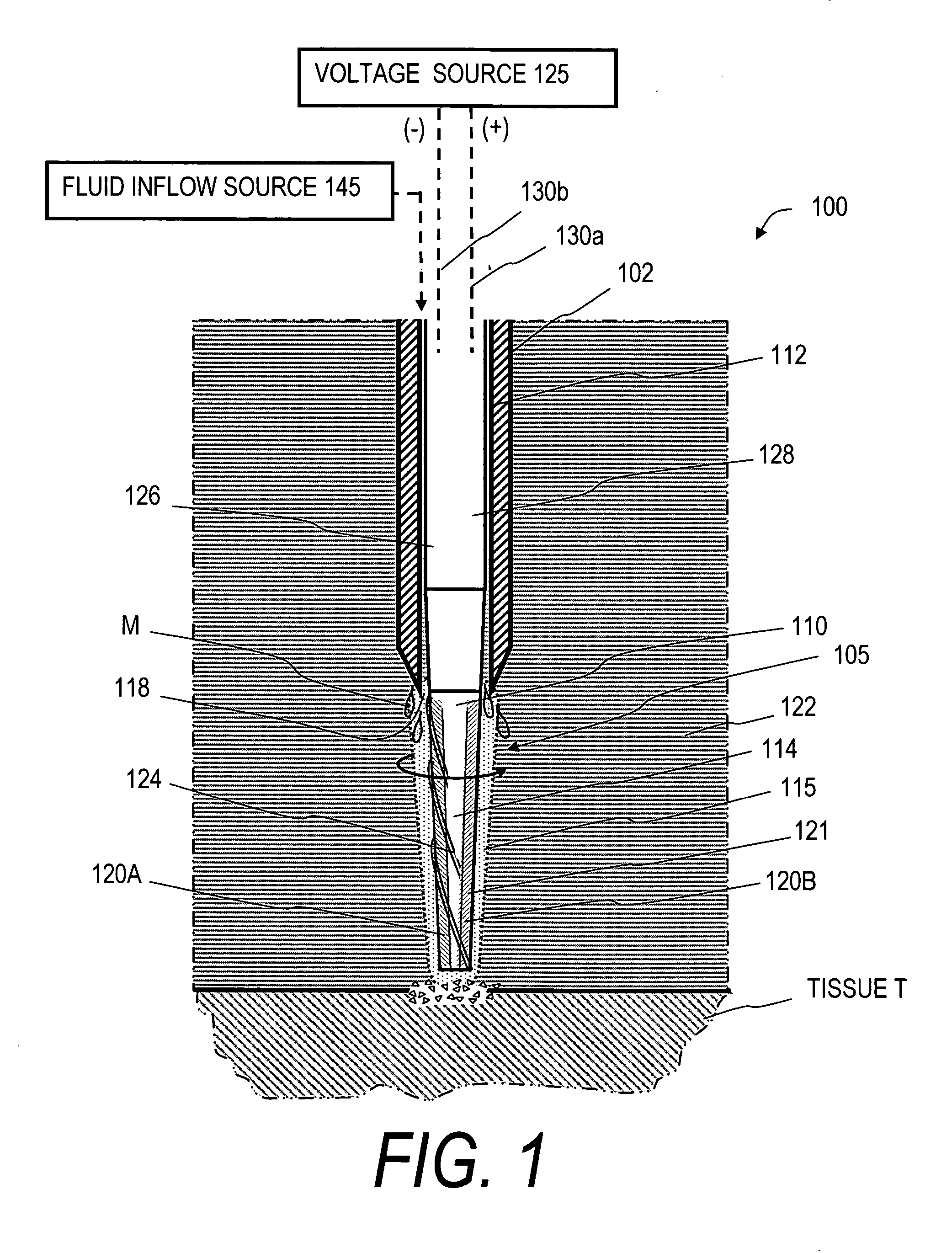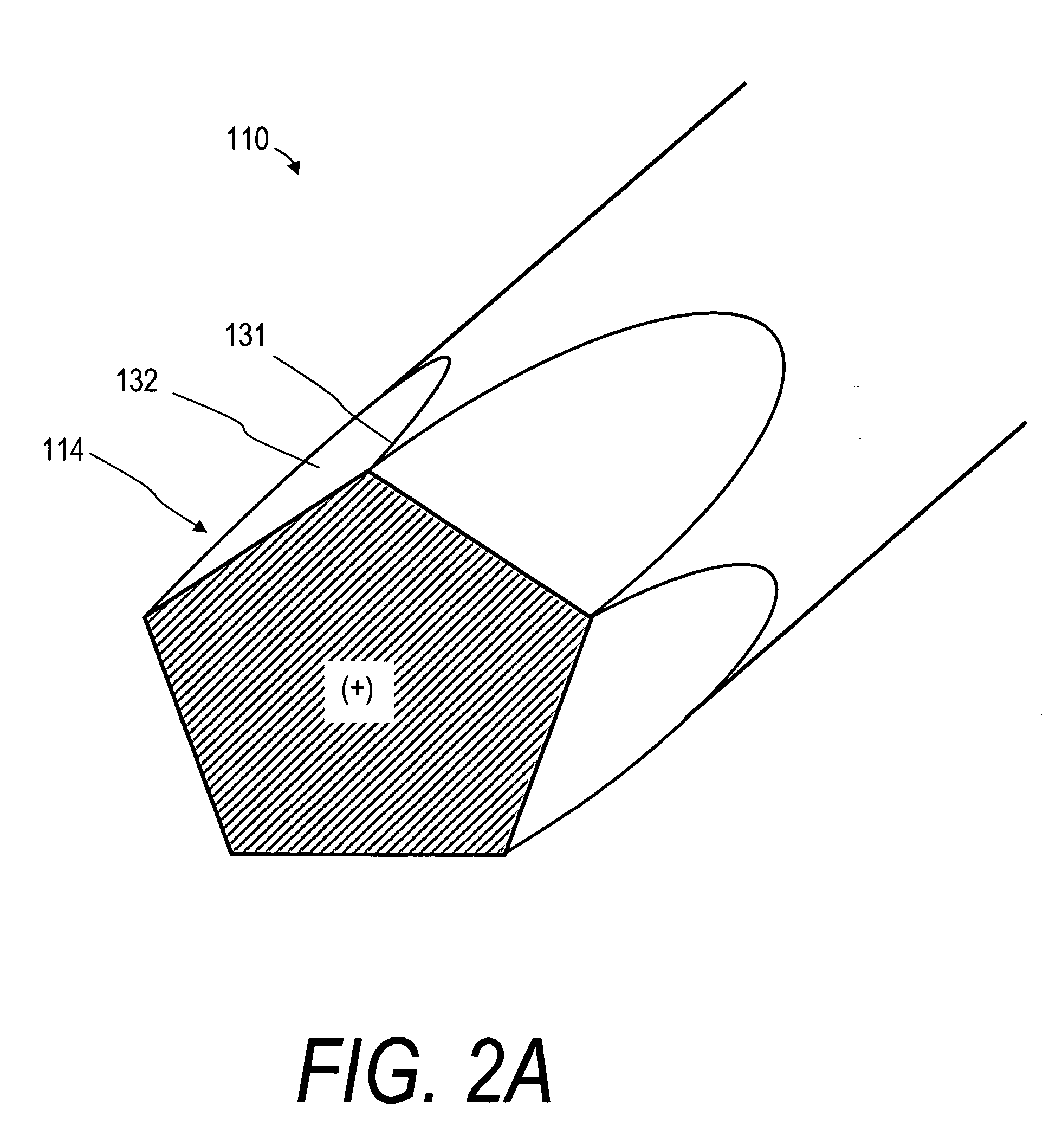Supercavitating medical probe and method of use
a medical probe and supercavitation technology, applied in the field of instruments and techniques, can solve the problems of sudden rise in ambient pressure, strong local shockwaves, unintended and undesirable cavitation phenomena, etc., and achieve the effect of reducing viscous drag and high straight line velocity
- Summary
- Abstract
- Description
- Claims
- Application Information
AI Technical Summary
Benefits of technology
Problems solved by technology
Method used
Image
Examples
Embodiment Construction
[0030]FIG. 1 illustrates an instrument system that comprises a medical probe 100 with a distal portion shown in FIG. 1 that is configured for creating cavitation and supercavitation about an actuatable or moveable surface for controlling the application of electrosurgical energy to tissue. In FIG. 1, an elongated shaft or sleeve member 102 carries an actuatable, moveable working end indicated at 105. In the embodiment of FIG. 1, the actuatable working end 105 comprises an elongated rotatable member 110 that extends through bore 112 in the shaft member 102 and is operatively coupled to a motor drive described further below. The rotatable member 110 and working end 105 is rotatable at a very high speed wherein the working surface 114 creates a cavity or supercavity 115 that can substantially envelope the working end. In the embodiment of FIG. 1, it can be seen that the actuatable working end 105 is exposed to extend outwardly from open termination 118 of bore 112, but the working end ...
PUM
 Login to View More
Login to View More Abstract
Description
Claims
Application Information
 Login to View More
Login to View More - R&D
- Intellectual Property
- Life Sciences
- Materials
- Tech Scout
- Unparalleled Data Quality
- Higher Quality Content
- 60% Fewer Hallucinations
Browse by: Latest US Patents, China's latest patents, Technical Efficacy Thesaurus, Application Domain, Technology Topic, Popular Technical Reports.
© 2025 PatSnap. All rights reserved.Legal|Privacy policy|Modern Slavery Act Transparency Statement|Sitemap|About US| Contact US: help@patsnap.com



